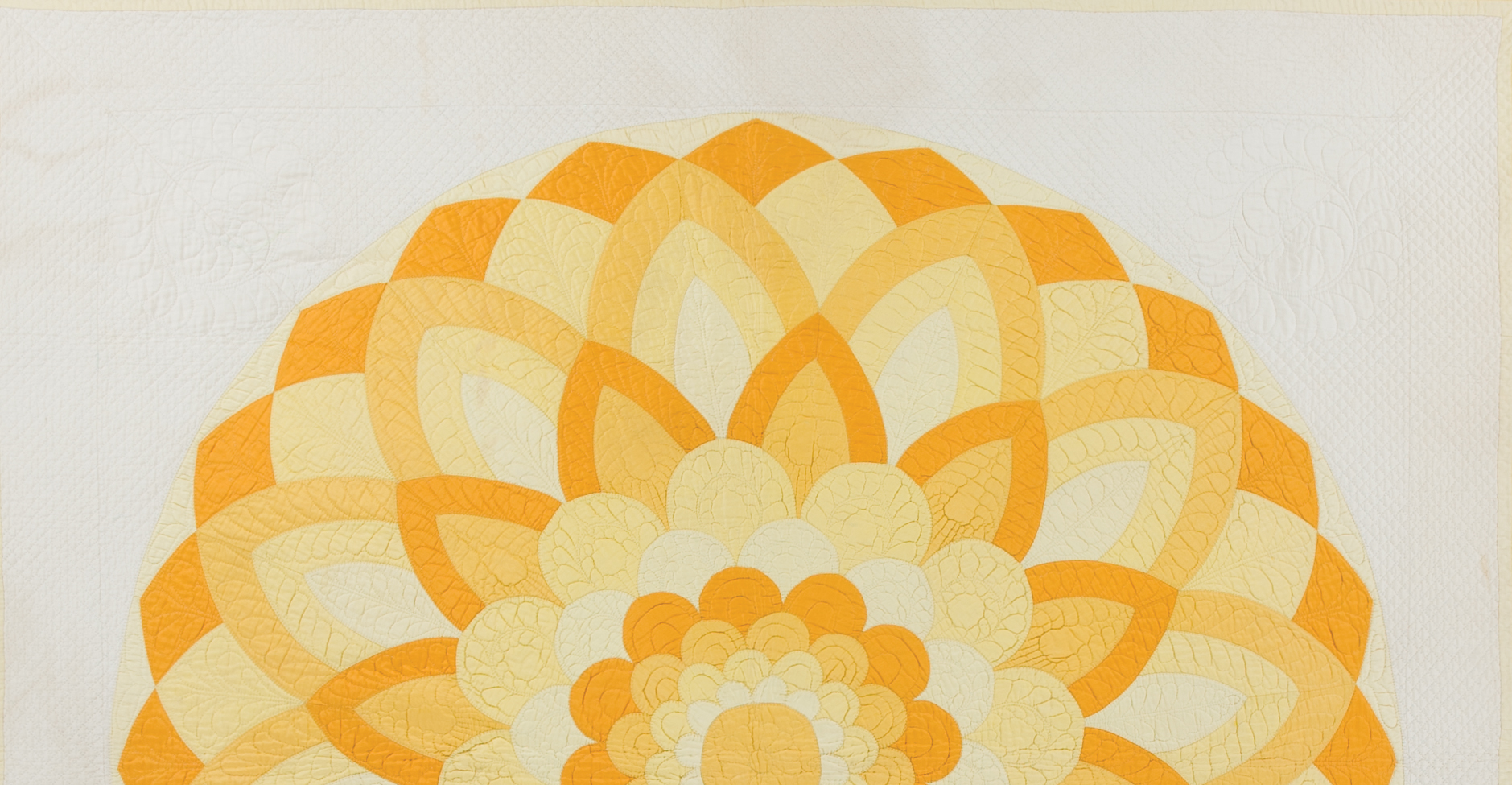
Modern Marvels
June 6, 2014-Feb 28, 2015
Quilts Made From Kits, 1915-1950

In the 1920s and 1930s, quilt kits—ready-made sets of fabric components—were new on the market and were seen as a modern, time-saving way to make a well-designed bedcovering. Kits of die-cut pieces for appliqué and pieced quilts sold for as little as $2.85 – at a time when a gallon of milk cost about 50 cents and a loaf of bread about 10 cents. Kits saved the maker the time needed for tracing around templates and cutting out each design unit. Show-stopping Lone Star and Broken Star quilts, so common in the 1930s, even came packaged with all the diamond pieces sorted by color. What could be easier?
Modern Marvels: Quilts made from Kits features some of the designers, companies, and publications that were well-known for their kits from the 1920s until about the middle of the century, when quiltmaking become less popular generally. Look around and you’ll see quilts designed by the famous Marie Webster and Anne Orr, among others, and from ever-present magazines like McCall’s Needlework and Craft. Many of these designs would look great in today’s homes — Come marvel at the fresh, modern quilts of a bygone era